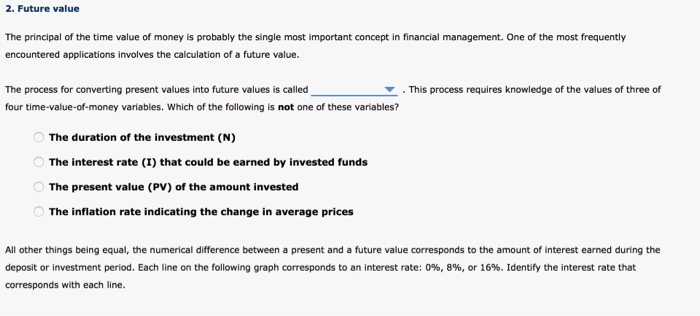1. Simple versus compound interest Financial contracts involving investments, mortgages, loans, and so on are based on either a fixed or a variable interest rate. Assume that fixed interest rates are used throughout this question. Heather deposited $1,700 at her local credit union in a savings account at the rate of 9.8% paid as simple interest. She will earn interest once a year for the next 13 years. If she were to make no additional deposits or withdrawals, how much money would the credit union owe Heather in 13 years? $3,865.80 $1,882.93 $266.60 $5,731.65 Now, assume that Heather's credit union pays a compound interest rate of 9.8% compounded annually. All other things being equal, how much will Heather have in her account after 13 years? $561.70 $1,866.60 $5,731.65 $3,865.80 Before deciding to deposit her money at the credit union, Heather checked the interest rates at her local bank as well. The bank was paying a nominal interest rate of 9.8% compounded quarterly. If Heather had deposited $1,700 at her local bank, how much would she have had in her account after 13 years? $5,985.09 $644.03 $1,872.82 $266.60 2. Future value The principal of the time value of money is probably the single most important concept in financial management. One of the most frequently encountered applications involves the calculation of a future value. This process requires knowledge of the values of three of The process for converting present values into future values is called four time-value-of-money variables. Which of the following is not one of these variables? The duration of the investment (N) The interest rate (I) that could be earned by invested funds The present value (PV) of the amount invested The inflation rate indicating the change in average prices All other things being equal, the numerical difference between a present and a future value corresponds to the amount of interest earned during the deposit or investment period. Each line on the following graph corresponds to an interest rate: 0%, 8%, or 16%. Identify the interest rate that corresponds with each line. VALUE IDollars 0 1 2 3 4 5 6 7 8 9 10 TIME Years Line A: Line B: Line C: Investments and loans base their interest calculations on one of two possible methods: the interest and the interest methods. Both methods apply three variables-the amount of principal, the interest rate, and the investment or deposit period-to the amount deposited or invested in order to compute the amount of interest. However, the two methods differ in their relationship between the variables. Assume that the variables I, N, and PV represent the interest rate, investment or deposit period, and present value of the amount deposited or invested, respectively. Which equation best represents the calculation of a future value (FV) using: Compound interest? FV = PV + (PV X I X N) FV = PV x (1 + I)N FV = PV / (1 + I) Simple interest? FV = PV XIXN FV = PV + (PV XIXN) FV = PV / (PV XI X N) Identify whether the following statements about the simple and compound interest methods are true or false. True False Statement After the end of the second year and all other factors remaining equal, a future value based on compound interest will never exceed the future value based on simple interest. All other variables held constant, investments paying simple interest have to pay significantly higher interest rates to earn the same amount of interest as an account earning compound interest. All other factors being equal, both the simple interest and the compound interest methods will accrue the same amount of earned interest by the end of the first year. Alek is willing to invest $30,000 for eight years, and is an economically rational investor. He has identified three investment alternatives (A, B, and C) that vary in their method of calculating interest and in the annual interest rate offered. Since he can only make one investment during the eight-year investment period, complete the following table and indicate whether Alek should invest in each of the investments. Note: When calculating each investment's future value, assume that all interest is earned annually. The final value should be rounded to the nearest whole dollar Investment Expected Future Value Make this investment? A Interest Rate and Method 9% simple interest 4% compound interest MA B $ c 6% compound interest










